Microstructure Evolution of 316L Steel Prepared with the Use of Additive and Conventional Methods and Subjected to Dynamic Loads: A Comparative Study
Abstract
1. Introduction
2. Materials and Methods
2.1. Material and Specimen Preparation
2.2. SHPB Experiments
2.3. Microstructural Investigation
3. Results
3.1. Mechanical Properties
3.2. Microstructure Evaluation
4. Discussion
5. Conclusions
- The plastic flow stress (σ3%) is significantly lower for additively manufactured 316L than that obtained by hot forging. This is a strictly microstructural effect, i.e., SS316L produced by the LENS technique is cyclically heated and cooled during production, which leads to both recovery and an increase in the ferrite content at grain boundaries, i.e., a phase that is characterized by nearly two times less tensile strength than that of austenite when the 316L fabricated with hot forging is characterized by a “pure” austenite structure.
- The morphology of the LENS 316L microstructure significantly changes with increasing deformation rates, i.e., the primary grains grow to form macro-grains and undergo fragmentation at low and high deformation rates, respectively. The influence of the deformation rate, by contrast, has a negligible effect on hot-forged 316L microstructure morphology.
- The participation of grain boundaries below 15° disorientation for hot-forged 316L increases with the increasing strain rate, opposite to the relationship in LENS 316L.
- Different mechanisms of deformation for hot-forged 316L and LENS 316L samples were observed. In the first case, the dominant deformation mechanism is twinning, which is favored by a high deformation speed and low SFE positioning error for austenite. On the contrary, deformation occurs predominantly through dislocation slip (clearly visible slip/shear bands on the surface of the tested samples, both for the minimum and maximum strain rates) for LENS 316L samples.
Author Contributions
Funding
Conflicts of Interest
References
- Bellini, A.; Güçeri, S. Mechanical characterization of parts fabricated using fused deposition modeling. Rapid Prototyp. J. 2003, 9, 252–264. [Google Scholar] [CrossRef]
- Tatarczak, J.; Krzysiak, Z.; Samociuk, W.; Kaliniewicz, Z.; Krzywonos, L. A review of the newest 3D printing technology for metal objects. Mechanik 2017, 90, 612–614. [Google Scholar] [CrossRef][Green Version]
- Klocke, F.; Arntz, K.; Teli, M.; Winands, K.; Wegener, M.; Oliari, S. State-of-the-art laser additive manufacturing for hot-work tool steels. Procedia CIRP 2017, 63, 58–63. [Google Scholar]
- Herzog, D.; Seyda, V.; Wycisk, E.; Emmelmann, C. Additive manufacturing of metals. Acta Mater. 2016, 117, 371–392. [Google Scholar] [CrossRef]
- Santos, E.C.; Shiomi, M.; Osakada, K.; Laoui, T. Rapid manufacturing of metal components by laser forming. Int. J. Mach. Tools Manuf. 2006, 46, 1459–1468. [Google Scholar] [CrossRef]
- Wang, L.; Felicelli, S.; Gooroochurn, Y.; Wang, P.T.; Horstemeyer, M.F. Optimization of the LENS® process for steady molten pool size. Mater. Sci. Eng. A 2008, 474, 148–156. [Google Scholar] [CrossRef]
- Available online: http://www.optomec.com/3d-printed-metals/lens-materials/ (accessed on 8 October 2020).
- Keicher, D.M. Laser engineered net shaping process. In LIA Handbook of Laser Materials Processing; Ready, J.F., Ed.; Laser Institute of America: Orlando, FL, USA, 2001; pp. 561–563. [Google Scholar]
- Ziętala, M.; Durejko, T.; Polański, M.; Kunce, I.; Płociński, T.; Zieliński, W.; Łazińska, M.; Stępniowski, W.; Czujko, T.; Kurzydłowski, K.J.; et al. The microstructure, mechanical properties and corrosion resistance of 316 L stainless steel fabricated using laser engineered net shaping. Mater. Sci. Eng. A 2016, 677, 1–10. [Google Scholar] [CrossRef]
- Riza, S.H.; Masood, S.H.; Wen, C.; Ruan, D.; Xu, S. Dynamic behaviour of high strength steel parts developed through laser assisted direct metal deposition. Mater. Des. 2014, 64, 650–659. [Google Scholar] [CrossRef]
- Sadeghi, H.; Bhate, D.; Abraham, J.; Magallanes, J. Quasi-static and Dynamic Behavior of Additively Manufactured Metallic Lattice Cylinders. AIP Conf. Proc. 2018, 1979. [Google Scholar] [CrossRef]
- Lee, W.-S.; Lin, C.-F.; Liu, T.-J. Strain rate dependence of impact properties of sintered 316L stainless steel. J. Nucl. Mater. 2006, 359, 247–257. [Google Scholar] [CrossRef]
- Tancogne-Dejean, T.; Spierings, A.B.; Mohr, D. Additively-manufactured metallic micro-lattice materials for high specific energy absorption under static and dynamic loading. Acta Mater. 2016, 116, 14–28. [Google Scholar] [CrossRef]
- Kim, S.-I.; Yoo, Y.-C. Dynamic recrystallization behavior of AISI 304 stainless steel. Mater. Sci. Eng. A 2001, 311, 108–113. [Google Scholar] [CrossRef]
- Derby, B. The dependence of grain size on stress during dynamic recrystallisation. Acta Metall. Mater. 1991, 39, 955–962. [Google Scholar] [CrossRef]
- Van Bremen, R.; Gomes, D.R.; de Jeer, L.T.H.; Ocelík, V.; De Hosson, J.T.M. On the optimum resolution of transmission-electron backscattered diffraction (t-EBSD). Ultramicroscopy 2016, 160, 256–264. [Google Scholar] [CrossRef] [PubMed]
- Parr, J.G.; Hanson, A.; Lula, R. Stainless Steel; ASM: Metal Parks, OH, USA, 1989. [Google Scholar]
- Available online: https://medgal.com.pl/ (accessed on 8 October 2020).
- Lee, W.-S.; Chen, T.-H.; Lin, C.-F.; Luo, W.-Z. Impact Response and Microstructural Evolution of 316L Stainless Steel under Ambient and Elevated Temperature Conditions. Metall. Mater. Trans. A 2012, 43, 3998–4005. [Google Scholar]
- Lee, W.-S.; Chen, T.-H.; Lin, C.-F.; Luo, W.-Z. Dynamic Mechanical Response of Biomedical 316L Stainless Steel as Function of Strain Rate and Temperature. Bioinorg. Chem. Appl. 2011, 1–13. [Google Scholar] [CrossRef]
- Lee, W.-S.; Lin, C.-F.; Chen, T.-H.; Luo, W.-Z. High temperature deformation and fracture behaviour of 316L stainless steel under high strain rate loading. J. Nucl. Mater. 2012, 420, 226–234. [Google Scholar]
- Bekker, A.; Cloete, T.J.; Chinsamy-Turan, A.; Nurick, G.N.; Kok, S. Constant strain rate compression of bovine cortical bone on the Split-Hopkinson Pressure Bar. Mater. Sci. Eng. C 2015, 46, 443–449. [Google Scholar] [CrossRef]
- Chen, W.; Song, B. Split Hopkinson (Kolsky) Bar: Design, Testing and Applications; Springer: Berlin, Germany, 2011. [Google Scholar]
- Lu, Y.B.; Li, Q.M. Appraisal of Pulse-Shaping Technique in Split Hopkinson Pressure Bar Tests for Brittle Materials. Int. J. Prot. Struct. 2010, 1, 363–390. [Google Scholar] [CrossRef]
- Panowicz, R.; Janiszewski, J.; Kochanowski, K. Influence of pulse shaper geometry on wave pulses in SHPB experiments. J. Theor. Appl. Mech. 2018, 56, 1217–1221. [Google Scholar] [CrossRef]
- Panowicz, R.; Janiszewski, J.; Kochanowski, K. The non-axisymmetric pulse shaper position influence on SHPB experiment data. J. Theor. Appl. Mech. 2018, 56, 873–886. [Google Scholar] [CrossRef]
- Taylor, G.I.; Quinney, H. The latent energy remaining in a metal after cold working. Proc. R. Soc. London 1934, 143, 307–326. [Google Scholar]
- 316L Steel Specific Heat. Available online: http://www.matweb.com/ (accessed on 8 October 2020).
- Ashby, M.F. The deformation of plastically non-homogeneous materials. Philos. Mag. A J. Theor. Exp. Appl. Phys. 1970, 21, 399–424. [Google Scholar] [CrossRef]
- Nye, J.F. Some geometrical relations in dislocated crystals. Acta Metall. 1953, 1, 153–162. [Google Scholar] [CrossRef]
- Hamdi, F.; Asgari, S. Evaluation of the Role of Deformation Twinning in Work Hardening Behavior of Face-Centered-Cubic Polycrystals. Metall. Mater. Trans. A 2008, 39, 294–303. [Google Scholar] [CrossRef]
- Eskandari, M.; Szpuna, J.A. Microstructure and texture of high manganese steel subjected to dynamic impact loading. Mater. Sci. Technol. 2020, 36, 1044–1056. [Google Scholar] [CrossRef]
- Eskandari, M.; Mohtadi-Bonab, M.A.; Yeganeh, M.; Szpunar, J.A.; Odeshi, A.G. High-strain-rate deformation behaviour of new high-Mn austenitic steel during impact shock-loading. Mater. Sci. Technol. 2019, 35, 77–88. [Google Scholar] [CrossRef]
- Molnár, D.; Sun, X.; Lu, S.; Li, W.; Engberg, G.; Vitos, L. Effect of temperature on the stacking fault energy and deformation behaviour in 316L austenitic stainless steel. Mater. Sci. Eng. A 2019, 759, 490–497. [Google Scholar] [CrossRef]
- Sakai, T.; Belyakov, A.; Kaibyshev, R.; Miura, H.; Jonas, J.J. Dynamic and post-dynamic recrystallization under hot, cold and severe plastic deformation conditions. Prog. Mater. Sci. 2014, 60, 130–207. [Google Scholar] [CrossRef]
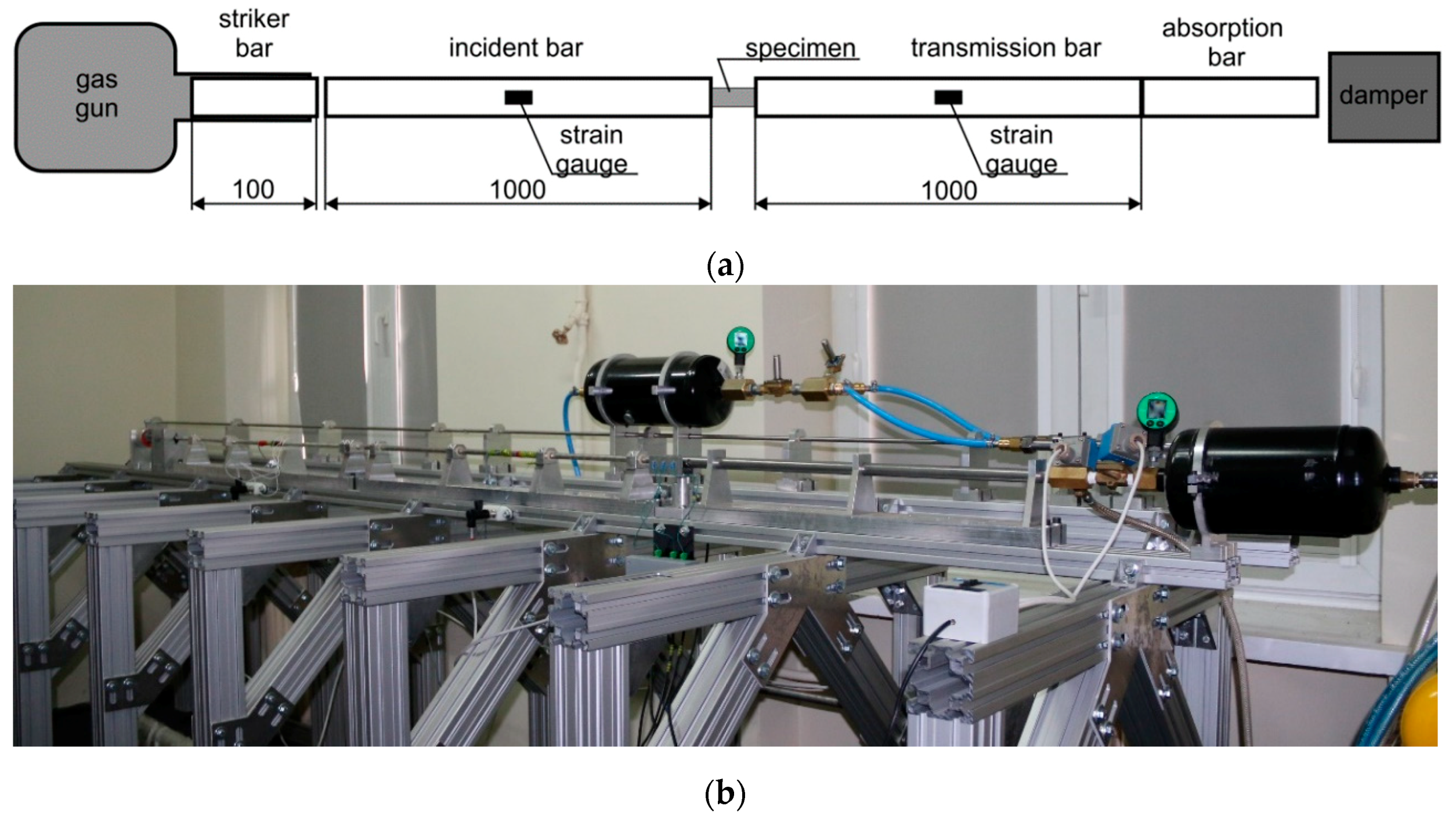
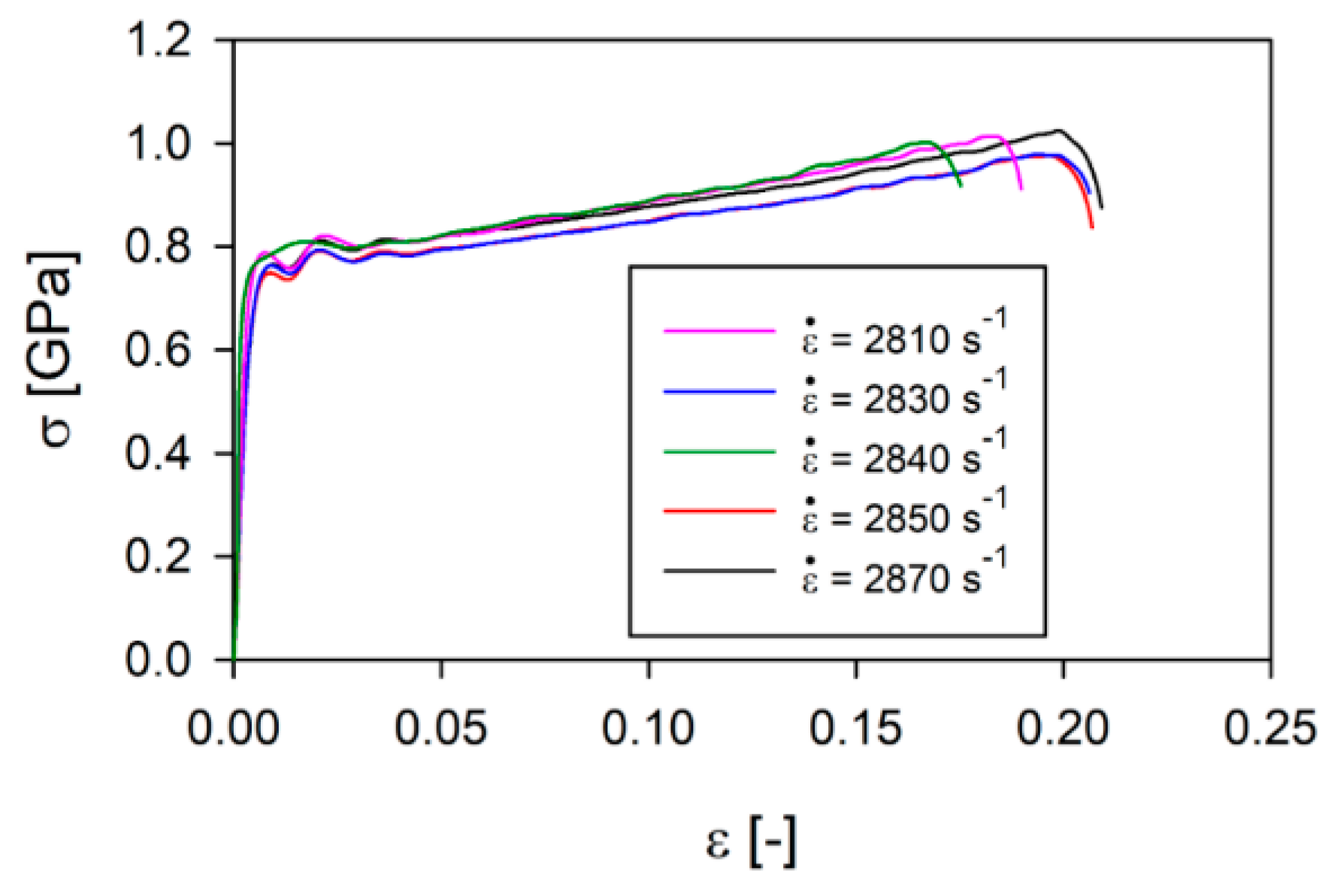
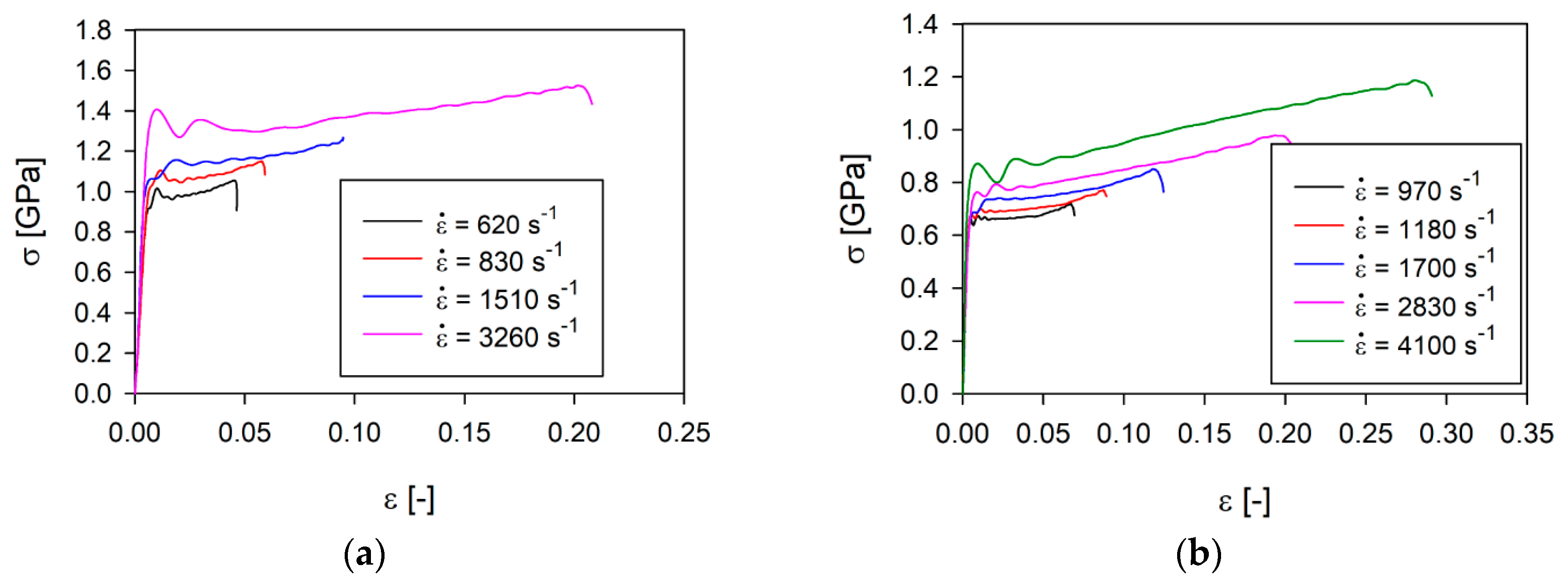

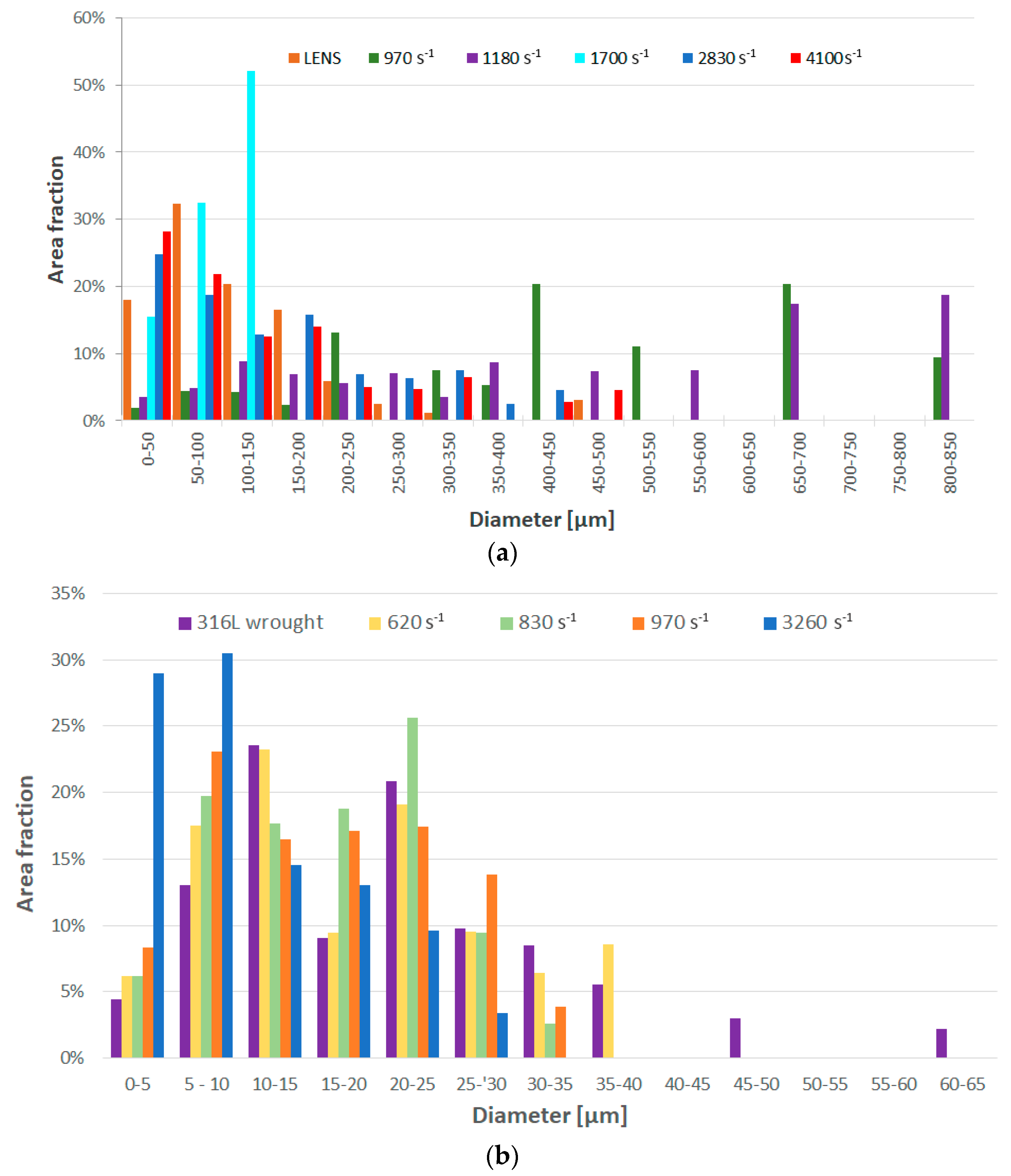
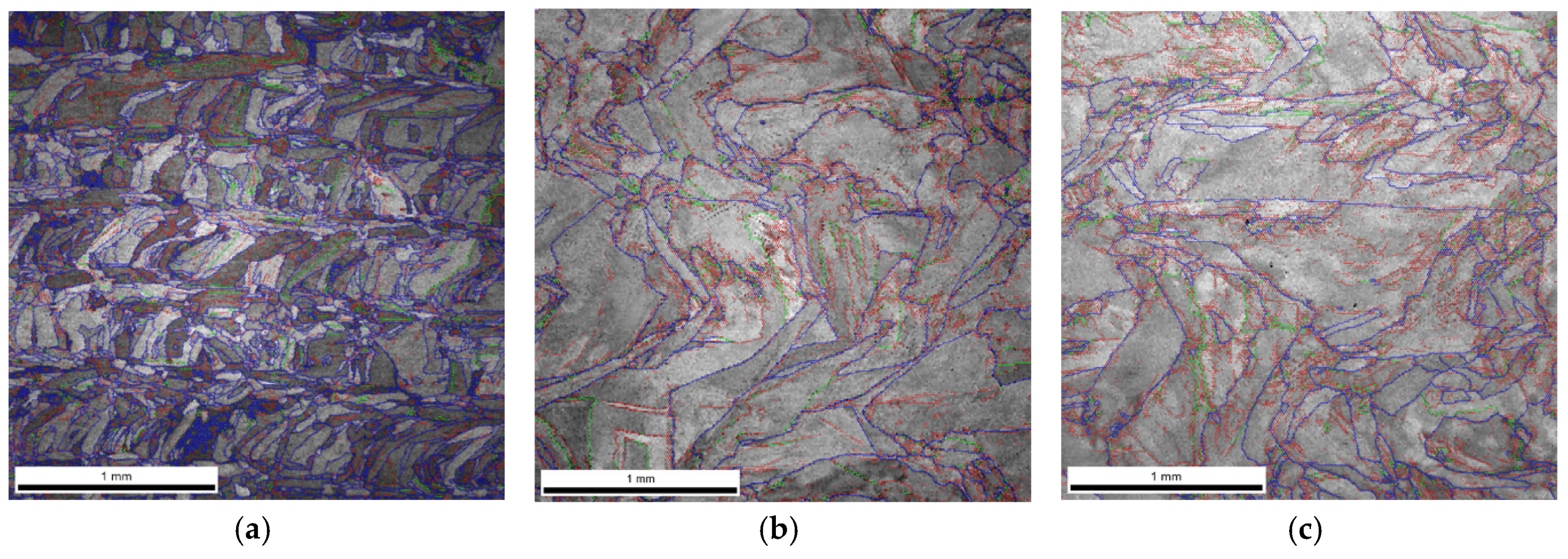
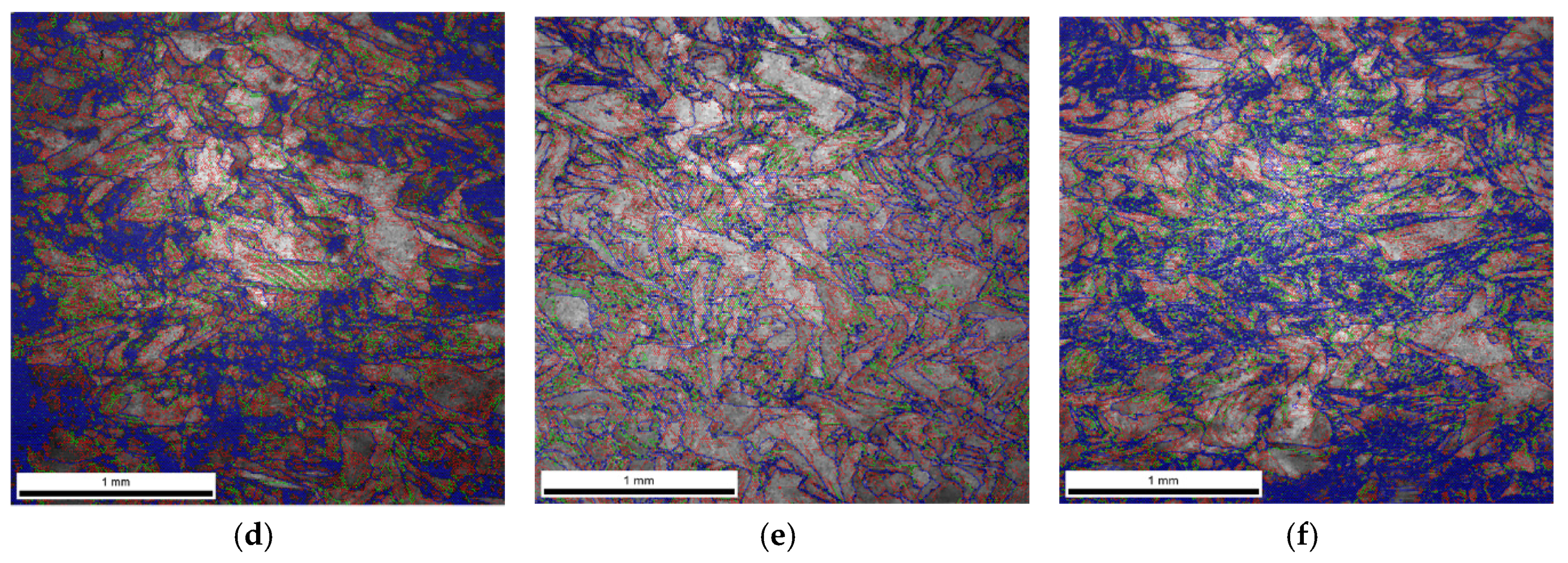
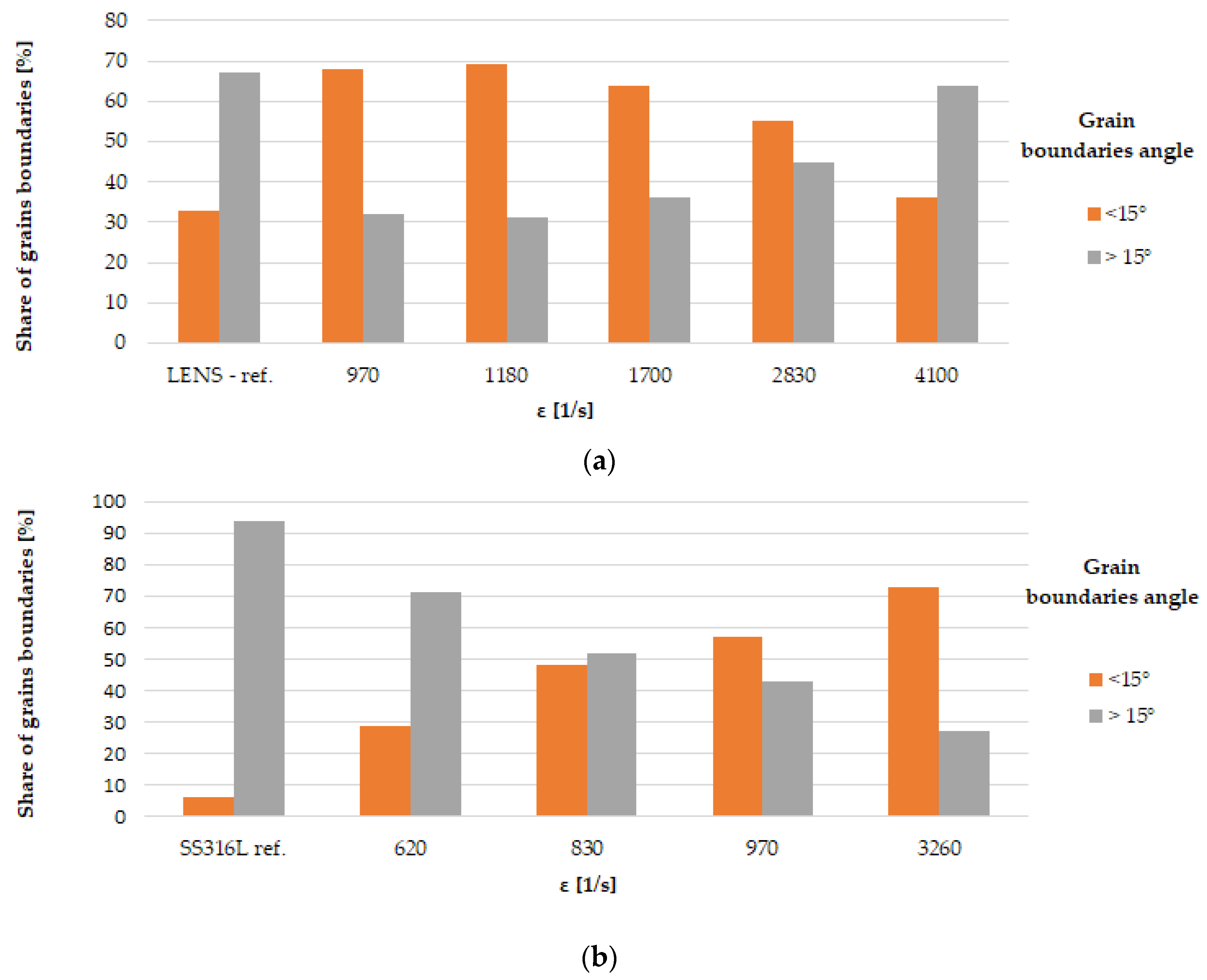
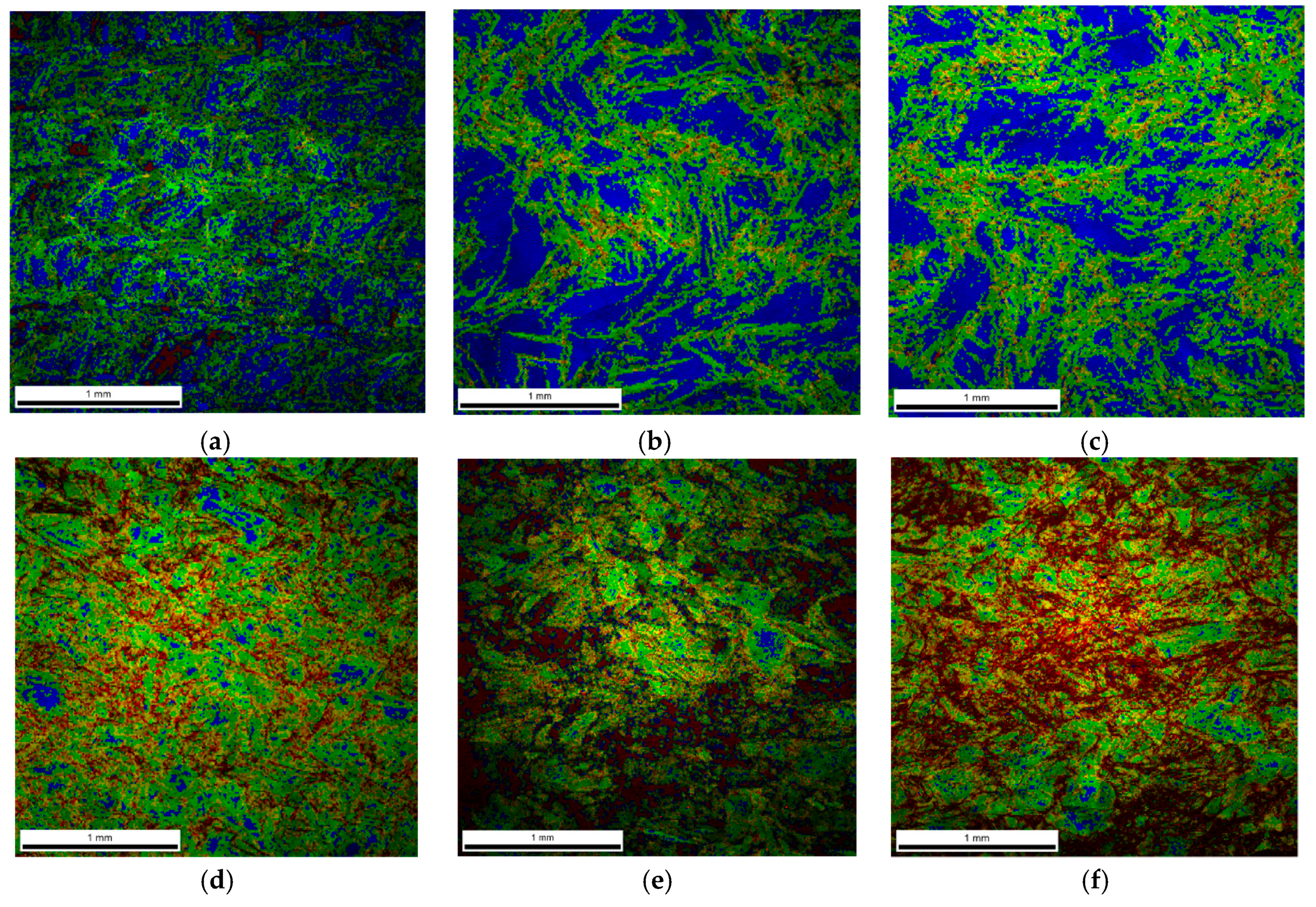
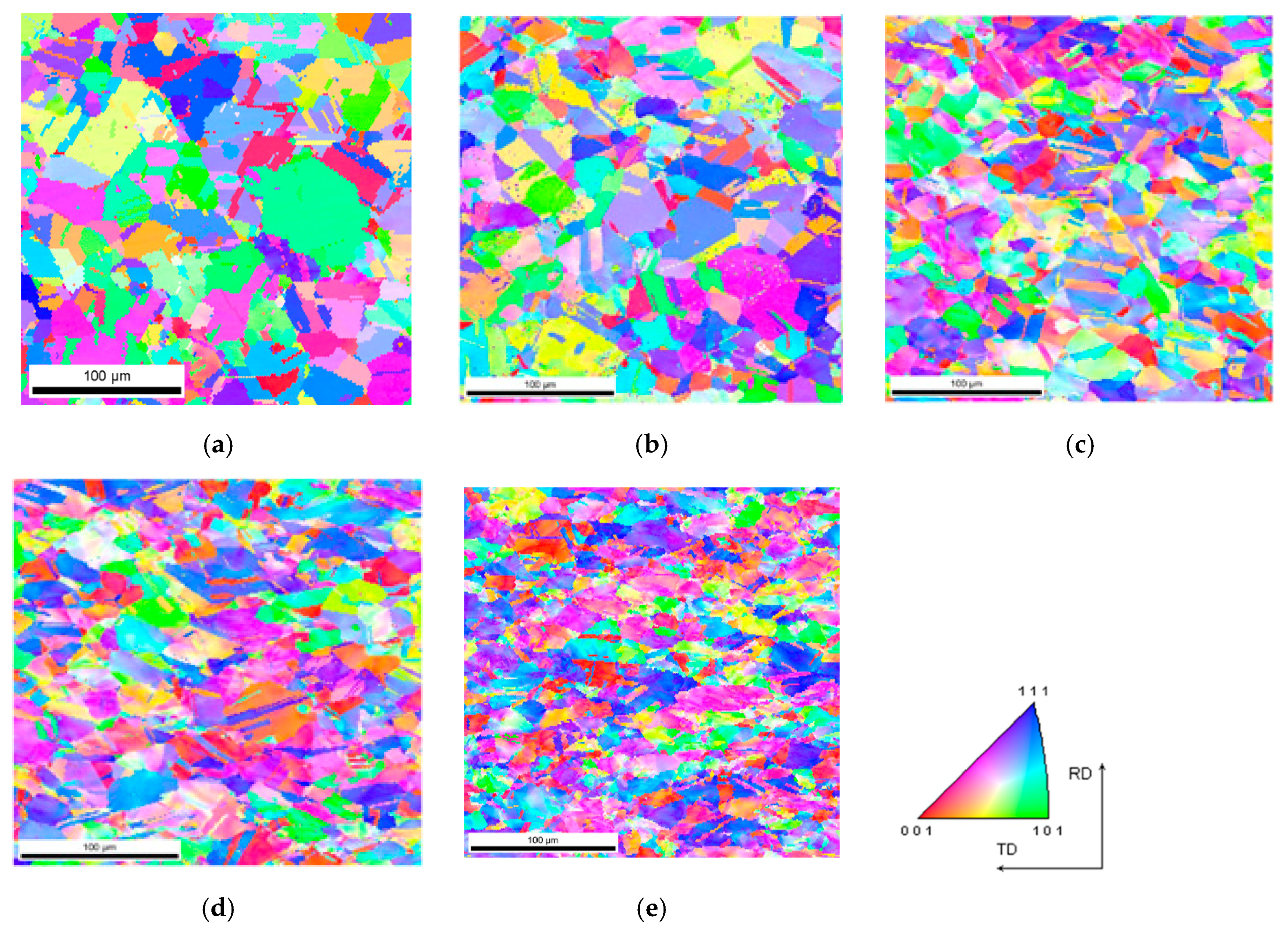
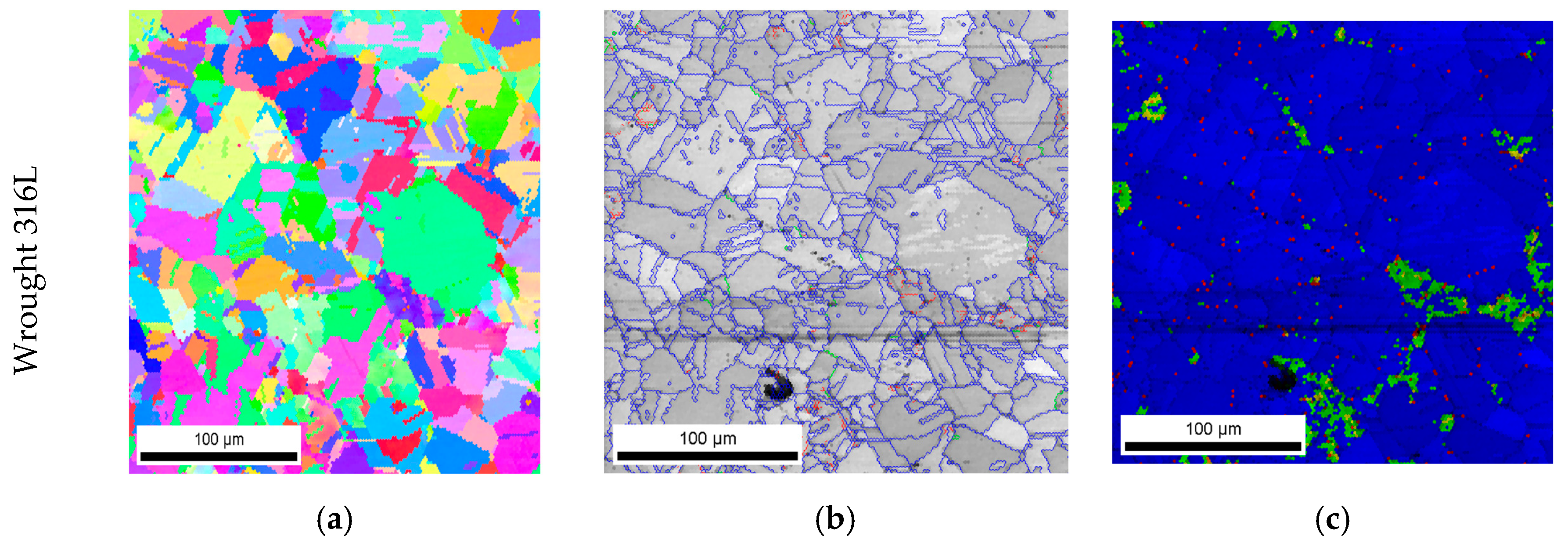
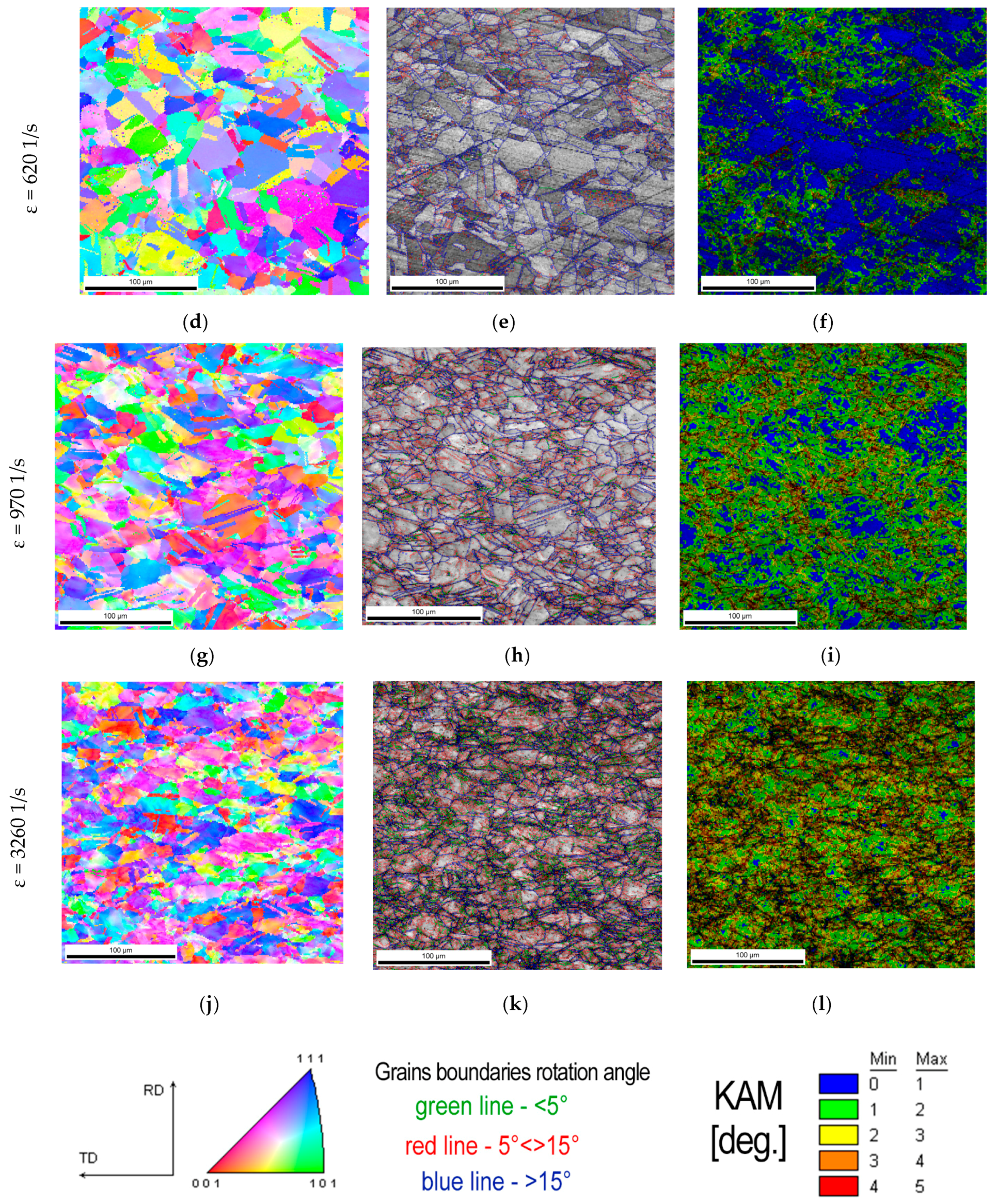
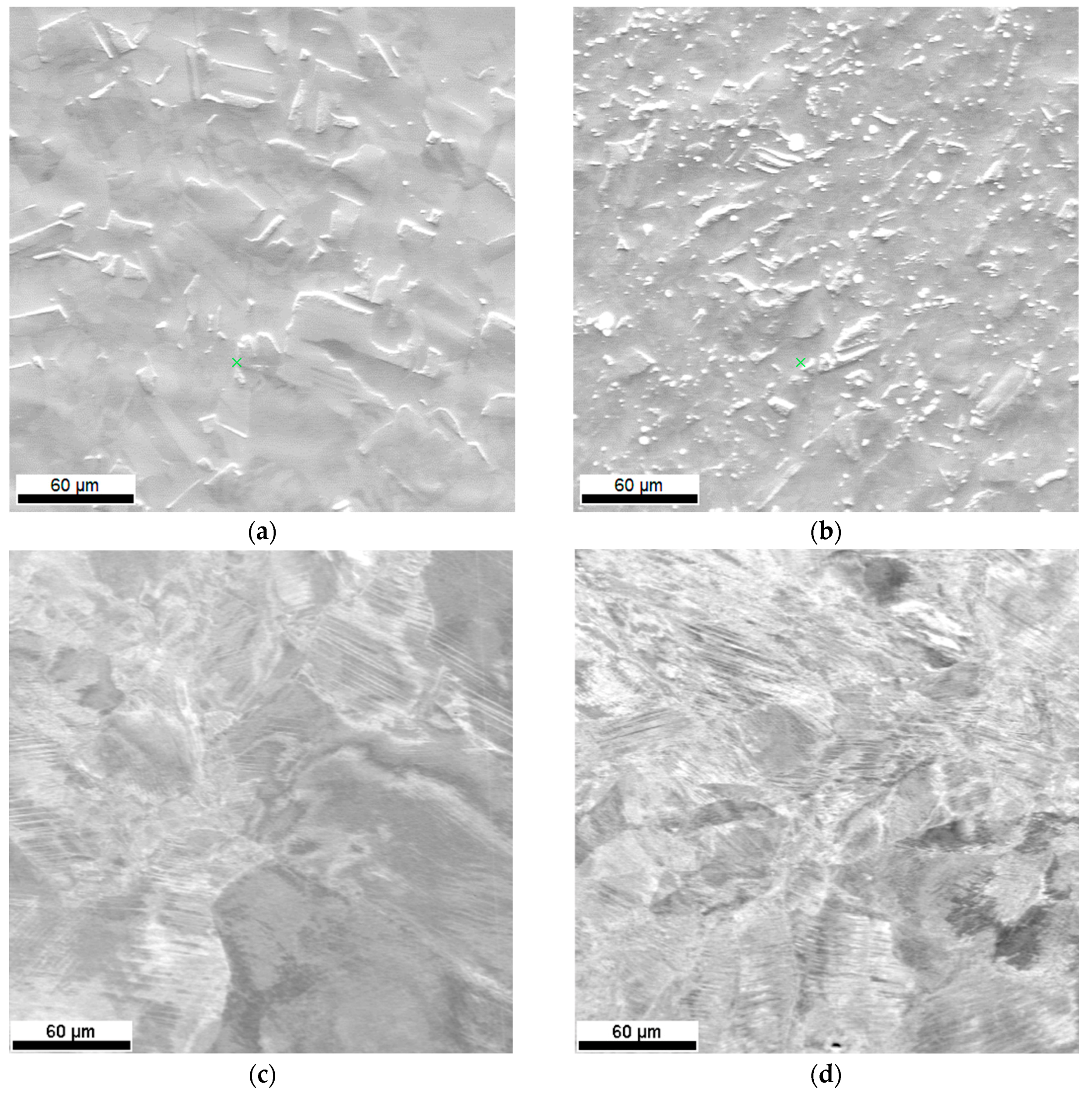
| Chemical Composition (wt. %) | ||||||
|---|---|---|---|---|---|---|
| C | Cr | Ni | Mn | Mo | Fe | |
| Nominal | ≤0.03 | 17.5 | 11.5 | ≤2 | 2–3 | balance |
| Powder | * | 16.84 ± 0.13 | 12.83 ± 0.1 | 1.91 ± 0.02 | 1.99 ± 0.02 | balance |
| LENS sample | * | 17.95 ± 0.22 | 12.37 ± 0.3 | 1.23 ± 0.01 | 2.39 ± 0.03 | balance |
| Implant | * | 17.2 ± 0.3 | 11.4 ± 0.2 | 1.75 ± 0.05 | 2.2 ± 0.15 | balance |
| Laser Power (W) | Head Feed Rate (mm/s) | Powder Feed Rate (g/s) | Layer Thickness (mm) | Hatch Width (mm) |
|---|---|---|---|---|
| 375 | 8 | 0.12 | 0.3 | 0.4 |
| Sample No. | Strain Rate (s−1) | σ5% (MPa) | σ15% (MPa) |
|---|---|---|---|
| 1 | 2870 | 820 | 941 |
| 2 | 2850 | 797 | 914 |
| 3 | 2830 | 794 | 912 |
| 4 | 2810 | 819 | 959 |
| 5 | 2840 | 821 | 967 |
| Average | 2840 | 810.2 | 938.6 |
| SS316L Alloy | 316L LENS | ||||
|---|---|---|---|---|---|
| Test No. | Strain Rate (s−1) | σ3% (MPa) | Test No. | Strain Rate (s−1) | σ3% (MPa) |
| 1 | 620 | 999 | 5 | 970 | 665.5 |
| 2 | 830 | 1070 | 6 | 1180 | 695 |
| 3 | 1510 | 1144 | 7 | 1700 | 738 |
| 4 | 3260 | 1356 | 8 | 2830 | 772 |
| 9 | 4100 | 882 | |||
Publisher’s Note: MDPI stays neutral with regard to jurisdictional claims in published maps and institutional affiliations. |
© 2020 by the authors. Licensee MDPI, Basel, Switzerland. This article is an open access article distributed under the terms and conditions of the Creative Commons Attribution (CC BY) license (http://creativecommons.org/licenses/by/4.0/).
Share and Cite
Ziętala, M.; Durejko, T.; Panowicz, R.; Konarzewski, M. Microstructure Evolution of 316L Steel Prepared with the Use of Additive and Conventional Methods and Subjected to Dynamic Loads: A Comparative Study. Materials 2020, 13, 4893. https://doi.org/10.3390/ma13214893
Ziętala M, Durejko T, Panowicz R, Konarzewski M. Microstructure Evolution of 316L Steel Prepared with the Use of Additive and Conventional Methods and Subjected to Dynamic Loads: A Comparative Study. Materials. 2020; 13(21):4893. https://doi.org/10.3390/ma13214893
Chicago/Turabian StyleZiętala, Michał, Tomasz Durejko, Robert Panowicz, and Marcin Konarzewski. 2020. "Microstructure Evolution of 316L Steel Prepared with the Use of Additive and Conventional Methods and Subjected to Dynamic Loads: A Comparative Study" Materials 13, no. 21: 4893. https://doi.org/10.3390/ma13214893
APA StyleZiętala, M., Durejko, T., Panowicz, R., & Konarzewski, M. (2020). Microstructure Evolution of 316L Steel Prepared with the Use of Additive and Conventional Methods and Subjected to Dynamic Loads: A Comparative Study. Materials, 13(21), 4893. https://doi.org/10.3390/ma13214893





